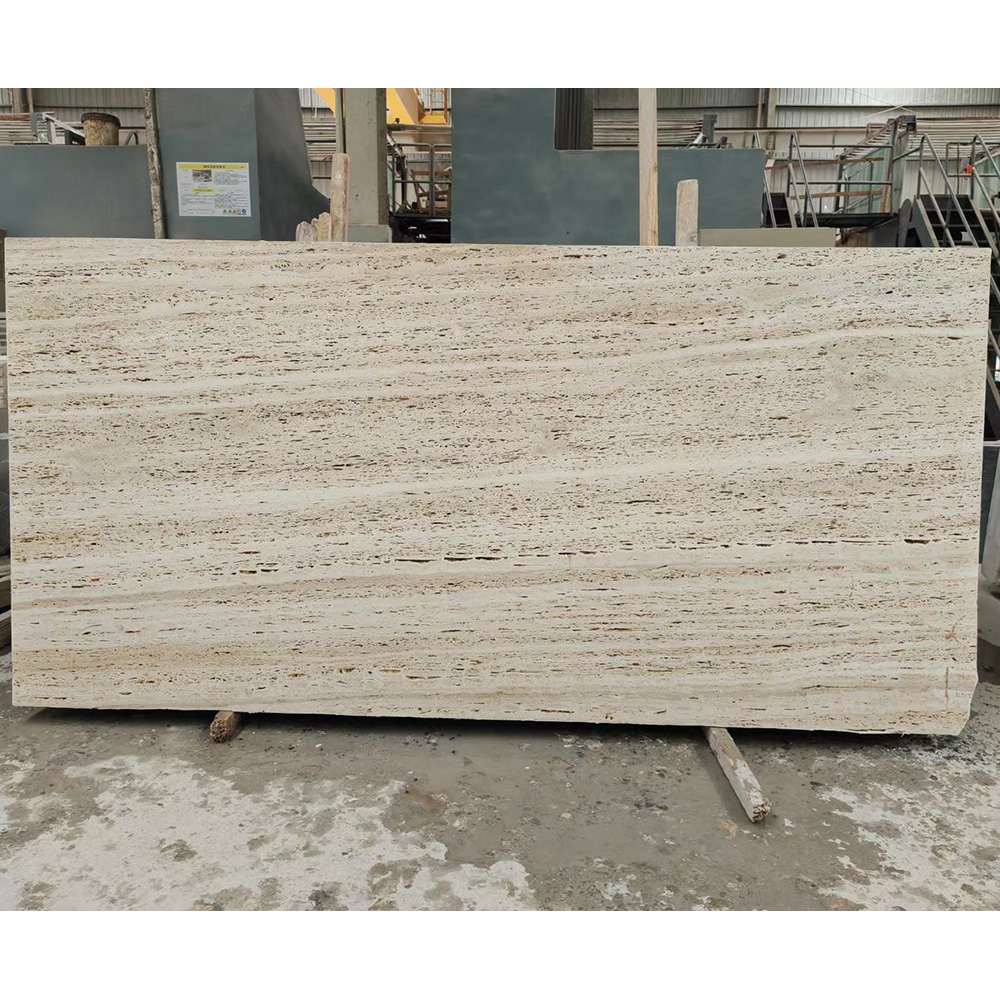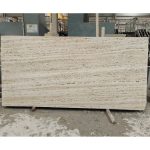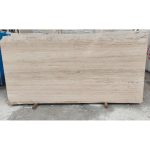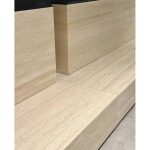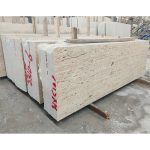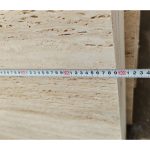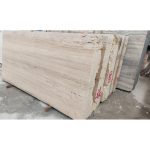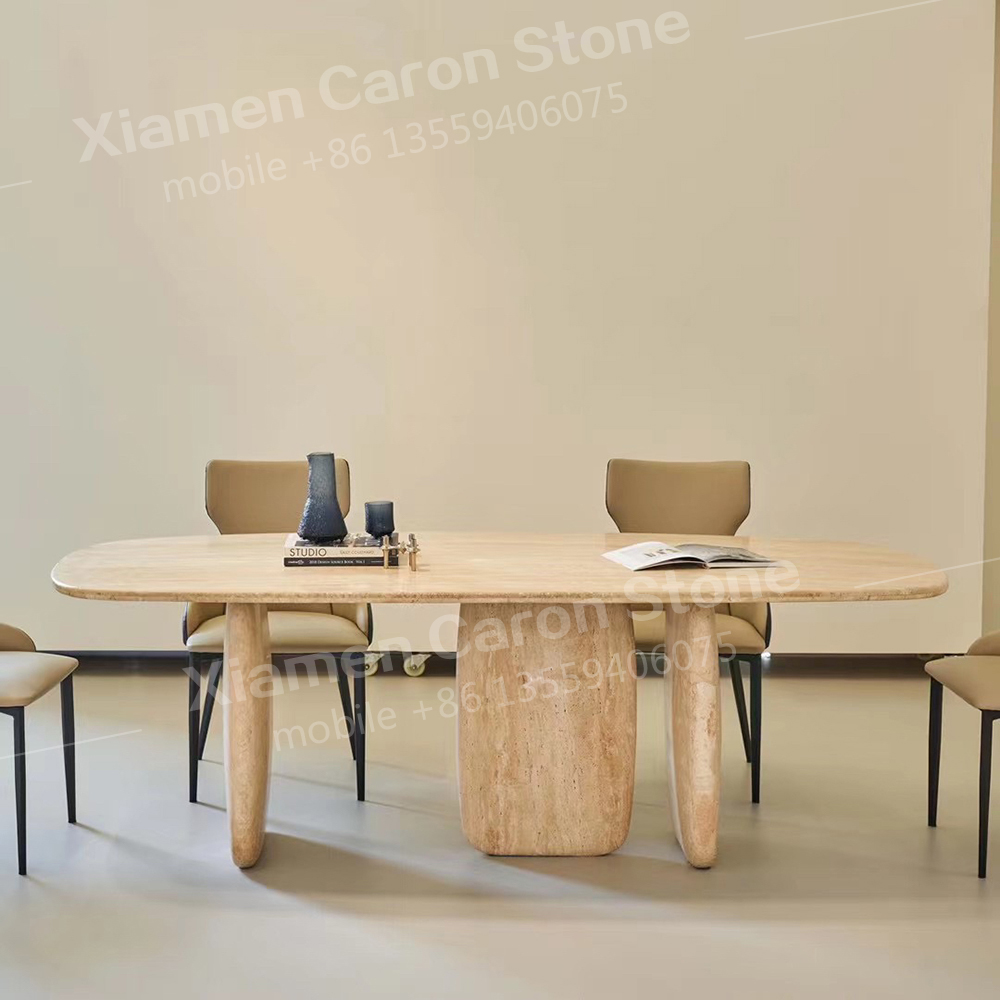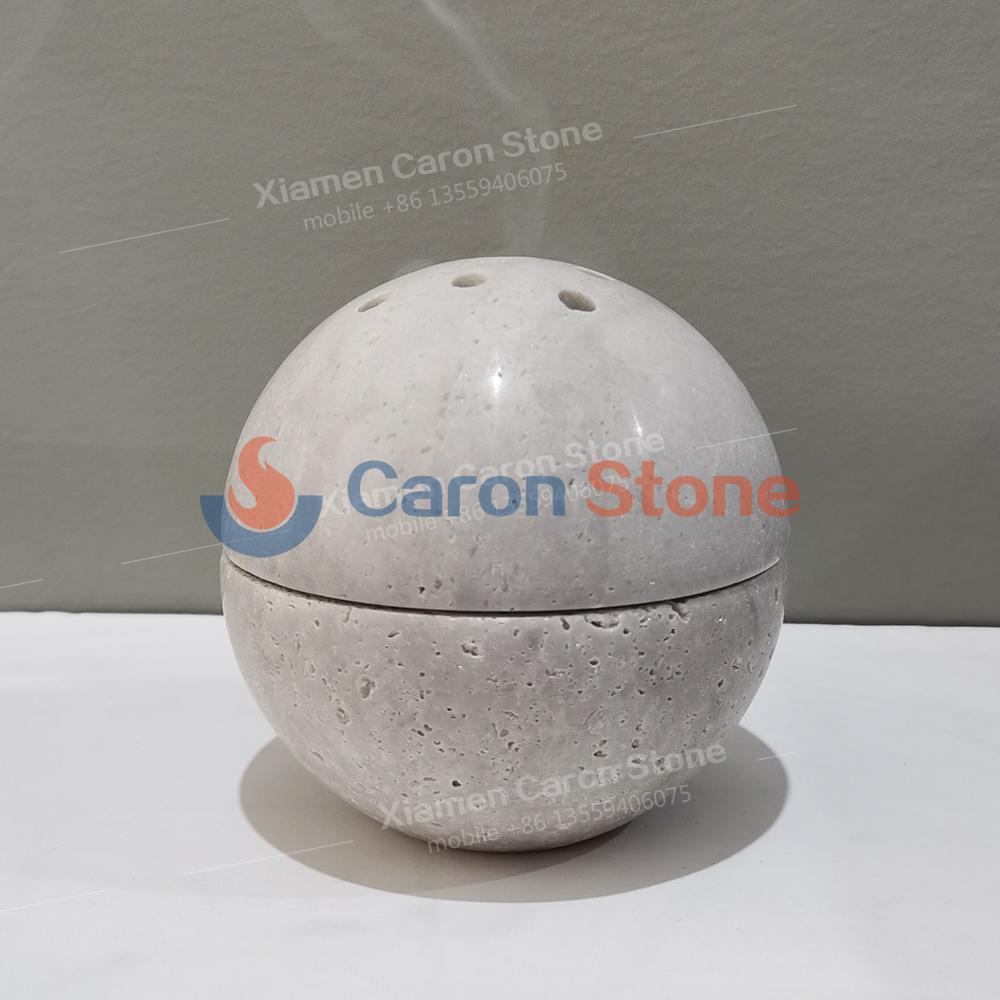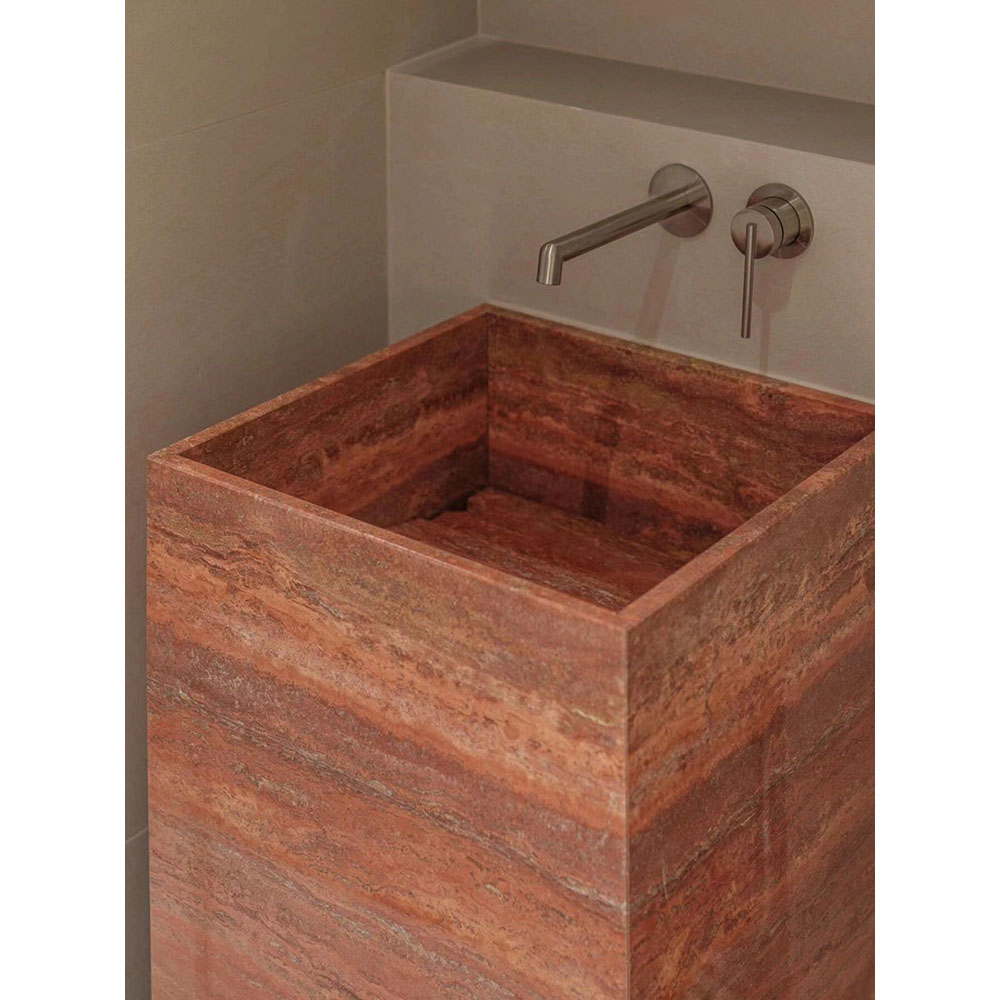» Light Cream Italian Roma Travertine
Light Cream Travertine is not only beautiful but also sustainable and durable. As a natural stone, it is an environmentally friendly choice that adds value to your space. The stone’s natural resistance to weathering and wear ensures that it will maintain its beauty over time, making it a wise investment for both residential and commercial projects.
When comparing travertine to other types of stone for interior design, several key factors come into play, including appearance, durability, maintenance, and application versatility. Here’s a detailed comparison:
1. Appearance
-
Travertine: Known for its warm, earthy tones and natural veining, travertine typically features colors ranging from cream and beige to soft grey and silver-blue. Its porous surface gives it a textured, rustic look that adds character to any space.
-
Marble: Marble is often characterized by its solid colors with contrasting veins, available in a wide range of hues from gold to blue. It has a smooth, polished finish that gives it a refined and luxurious appearance.
-
Granite: Granite offers a more varied color palette with speckled patterns due to its mineral composition. It has a more uniform and dense appearance compared to travertine.
2. Durability
-
Travertine: Travertine is durable but porous, which means it may require sealing to prevent staining. However, it is generally more forgiving when it comes to scratches and minor damages.
-
Marble: Marble is strong but can be susceptible to scratches and etching, especially from acidic substances. It is less porous than travertine but still requires regular sealing and maintenance.
-
Granite: Granite is highly durable and resistant to scratches and stains, making it a popular choice for high-traffic areas.
3. Maintenance
-
Travertine: Travertine needs regular sealing to protect against stains and requires gentle cleaning to avoid damage. It is softer than marble and granite, so it is more vulnerable to acidic cleaners and abrasion.
-
Marble: Marble also requires regular sealing, especially in areas exposed to moisture or acidic substances. It is more resistant to wear than travertine but still needs careful maintenance to maintain its polished finish.
-
Granite: Granite is low-maintenance and can withstand daily wear and tear with minimal care. It is less porous than travertine and marble, reducing the need for frequent sealing.
4. Applications
-
Travertine: Ideal for both interior and exterior applications, including flooring, wall cladding, pool surrounds, and outdoor landscaping. Its natural anti-slip properties make it suitable for wet areas.
-
Marble: Commonly used for bathroom walls, indoor floors, countertops, and fireplaces. It is preferred for high-end, luxurious designs.
-
Granite: Widely used for kitchen countertops, flooring, and exterior applications due to its durability and resistance to weathering.
5. Cost
-
Travertine: Generally more budget-friendly compared to marble. The cost can vary based on the quality and finish of the stone.
-
Marble: Often more expensive due to its luxurious appeal and high demand.
-
Granite: Costs can vary widely based on the type and quality, but it is generally competitive with travertine and marble.
When choosing between travertine, marble, and granite for interior design, consider the specific needs of your project. Travertine offers a rustic, warm aesthetic and is versatile for both indoor and outdoor use, making it a great choice for those seeking a natural, textured look. Marble provides a luxurious, polished appearance suitable for high-end designs, while granite offers superior durability and low maintenance, making it ideal for high-traffic areas. Each stone has its unique benefits, so the best choice depends on your design preferences, budget, and maintenance capabilities.
Leave Your Message
Write your message here and send it to us





